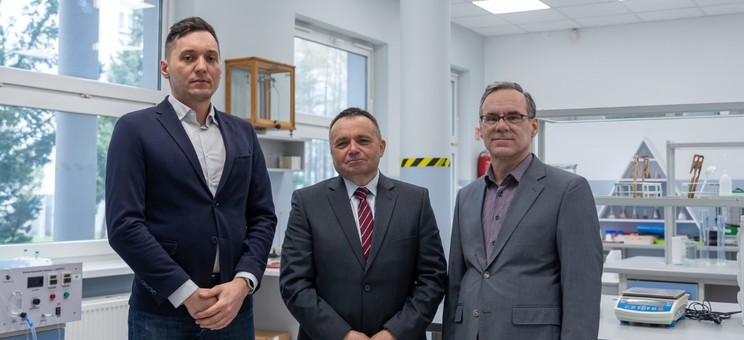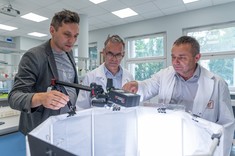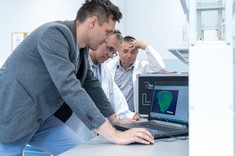Innovative technology for measuring fat content in food

A research team consisting of Krzysztof Tereszkiewicz, BEng, PhD, DSc, Assoc. Prof., and Łukasz Kulig, BEng, PhD, from the Department of Department of Computer Engineering in Management at the Faculty of Management, and Henryk Wachta, BEng, PhD, from the Department of Power Electronics and Power Engineering at the The Faculty of Electrical and Computer Engineering carried out a PCI-funded research project entitled. "Application of surface luminance distribution analysis in the measurement of fat content in meat".
The developed solutions in terms of the method and the measuring device received patent protection: P.431552 entitled. "Method of measuring intramuscular fat content in meat, especially pork or beef" and P.431551 entitled "Device for measuring intramuscular fat content in meat, especially pork or beef". The invention was also awarded a bronze medal at the INTARG 2022 International Innovation Fair in Katowice, Poland.
Project description
Measurements of surface luminance distribution as a lighting technique, which has so far been better known for its applications in the fields of architecture and road construction, among others, has been adopted by Prof. K. Tereszkiewicz's team in food technology. Thanks to the cooperation of scientists specialising in various fields of knowledge, luminance measurement was successfully applied to research involving the assessment of intramuscular fat content in meat products. The invention makes use of the phenomenon of luminance differences between fat and muscle tissue, proven by the authors. The measurement consists of taking a photograph (image) of the surface of the muscle sample. After registration, the overall image is converted into a luminance distribution map and then subjected to computer processing, which involves identifying individual areas of the surface in the direction of fat and meat identification. The developed algorithm describing the relationship between fat and meat surface area allows the intramuscular fat content of the sample to be determined directly. Compared to the commonly used classic fat extraction method, the developed method is highly environmentally friendly. It reduces the use of chemical reagents and eliminates the difficulties associated with the disposal of their residues. It reduces the time required for analysis, is non-invasive and low-cost.
The project has received significant interest from the business sector and has resulted in implementation work with a national leader in the manufacture of industrial optical equipment. This cooperation may result in the solution of the scientific team from PRz being implemented in the food industry. According to the creators of the invention, obtaining reliable information on the calorific and dietary value of meat products fits in with consumer expectations and is in line with pro-health trends in nutrition, including the prevention of civilisation diseases of the circulatory and digestive systems.
Currently, the team is continuing research into the possibility of using luminance distribution measurements to assess quality parameters of other food products. Inter-university cooperation has also been undertaken towards the application of the method in medical diagnostics. The completed project is a good example of successful cooperation between scientists representing different areas of knowledge and representatives of the economic sector.










